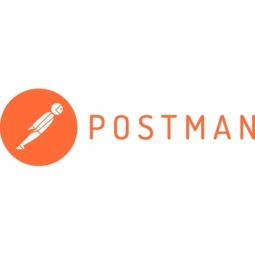公司规模
Large Corporate
地区
- America
国家
- Canada
- United States
产品
- Shopify API
- Polaris design system
- Liquid templating language
技术栈
- Ruby
- React
- GraphQL
实施规模
- Enterprise-wide Deployment
影响指标
- Customer Satisfaction
- Productivity Improvements
技术
- 平台即服务 (PaaS) - 应用开发平台
- 应用基础设施与中间件 - API 集成与管理
适用行业
- 电子商务
- 零售
适用功能
- 商业运营
- 销售与市场营销
服务
- 软件设计与工程服务
关于客户
Shopify 是一个领先的商务平台,提供一系列服务,包括产品列表、库存管理、付款、安全结账和运输。自 2006 年成立以来,Shopify 已发展到拥有 500 多名工程师,分布在渥太华、多伦多、蒙特利尔、滑铁卢和旧金山的办事处。该平台支持超过 500,000 个商家,并通过其平台处理超过 400 亿美元的销售额。Shopify 的核心应用程序是使用 Ruby on Rails 构建的最大应用程序之一。该公司还开发了自己的 Polaris 设计系统和流行的 Liquid 模板语言来支持其社区。
挑战
Shopify 是一家领先的商务平台,为所有商务接触点提供数百个端点。该平台为 50 多万商家提供帮助,并通过其平台处理超过 400 亿美元的销售额。其核心应用程序是使用 Ruby on Rails 构建的最大应用程序之一。但是,由于数千名合作伙伴使用 Shopify API 在平台上构建应用程序,因此必然会出现错误。Shopify 的升级支持团队需要一个可靠的工具来帮助重现请求并调试问题。此外,Shopify 的开发人员体验团队需要简化开发人员使用 API 的过程,并尽可能让体验顺畅愉快。
解决方案
Shopify 求助于流行的 API 客户端 Postman 来满足其开发、调试和文档编写需求。Shopify 的升级支持团队使用 Postman 来重现请求和调试问题。它允许他们隔离请求的每个元素,从而更轻松地解决问题。Shopify 的开发人员体验团队使用 Postman 来简化使用 API 的过程。他们发布了“在 Postman 中运行”按钮,以在其开发人员文档中共享 Postman 集合。开发人员输入 Shopify 凭据后,他们可以使用 Postman 直接访问和与他们的商店数据交互。除了发布共享集合之外,开发人员体验团队还为合作伙伴发布了一个教程,展示了 Postman 如何向 Shopify API 端点发送和捕获请求。
运营影响
数量效益

Case Study missing?
Start adding your own!
Register with your work email and create a new case study profile for your business.
相关案例.

Case Study
Improving Production Line Efficiency with Ethernet Micro RTU Controller
Moxa was asked to provide a connectivity solution for one of the world's leading cosmetics companies. This multinational corporation, with retail presence in 130 countries, 23 global braches, and over 66,000 employees, sought to improve the efficiency of their production process by migrating from manual monitoring to an automatic productivity monitoring system. The production line was being monitored by ABB Real-TPI, a factory information system that offers data collection and analysis to improve plant efficiency. Due to software limitations, the customer needed an OPC server and a corresponding I/O solution to collect data from additional sensor devices for the Real-TPI system. The goal is to enable the factory information system to more thoroughly collect data from every corner of the production line. This will improve its ability to measure Overall Equipment Effectiveness (OEE) and translate into increased production efficiencies. System Requirements • Instant status updates while still consuming minimal bandwidth to relieve strain on limited factory networks • Interoperable with ABB Real-TPI • Small form factor appropriate for deployment where space is scarce • Remote software management and configuration to simplify operations

Case Study
Digital Retail Security Solutions
Sennco wanted to help its retail customers increase sales and profits by developing an innovative alarm system as opposed to conventional connected alarms that are permanently tethered to display products. These traditional security systems were cumbersome and intrusive to the customer shopping experience. Additionally, they provided no useful data or analytics.

Case Study
How Sirqul’s IoT Platform is Crafting Carrefour’s New In-Store Experiences
Carrefour Taiwan’s goal is to be completely digital by end of 2018. Out-dated manual methods for analysis and assumptions limited Carrefour’s ability to change the customer experience and were void of real-time decision-making capabilities. Rather than relying solely on sales data, assumptions, and disparate systems, Carrefour Taiwan’s CEO led an initiative to find a connected IoT solution that could give the team the ability to make real-time changes and more informed decisions. Prior to implementing, Carrefour struggled to address their conversion rates and did not have the proper insights into the customer decision-making process nor how to make an immediate impact without losing customer confidence.

Case Study
Ensures Cold Milk in Your Supermarket
As of 2014, AK-Centralen has over 1,500 Danish supermarkets equipped, and utilizes 16 operators, and is open 24 hours a day, 365 days a year. AK-Centralen needed the ability to monitor the cooling alarms from around the country, 24 hours a day, 365 days a year. Each and every time the door to a milk cooler or a freezer does not close properly, an alarm goes off on a computer screen in a control building in southwestern Odense. This type of alarm will go off approximately 140,000 times per year, equating to roughly 400 alarms in a 24-hour period. Should an alarm go off, then there is only a limited amount of time to act before dairy products or frozen pizza must be disposed of, and this type of waste can quickly start to cost a supermarket a great deal of money.

Case Study
Supermarket Energy Savings
The client had previously deployed a one-meter-per-store monitoring program. Given the manner in which energy consumption changes with external temperature, hour of the day, day of week and month of year, a single meter solution lacked the ability to detect the difference between a true problem and a changing store environment. Most importantly, a single meter solution could never identify root cause of energy consumption changes. This approach never reduced the number of truck-rolls or man-hours required to find and resolve issues.








